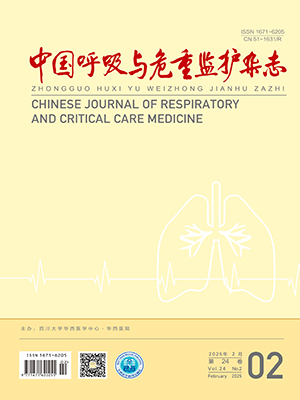| 1. |
Angus DC, van der Poll T. Severe sepsis and septic shock. N Engl J Med, 2013, 369:2063.
|
| 2. |
Daviaud F, Grimaldi D, Dechartres A, et al. Timing and causes of death in septic shock. Ann Intensive Care, 2015, 5:58.
|
| 3. |
Ranieri VM, Thompson BT, Barie PS, et al. Drotrecogin alfa (activated) in adults with septic shock. N Engl J Med, 2012, 366:2055-2064.
|
| 4. |
Hayes MA, Timmins AC, Yau EH, et al. Oxygen transport patterns in patients with sepsis syndrome or septic shock: influence of treatment and relationship to outcome. Crit Care Med, 1997, 25:926-936.
|
| 5. |
van Beest P, Wietasch G, Scheeren T, et al. Clinical review: use of venous oxygen saturations as a goal - a yet unfinished puzzle. Crit Care, 2011, 15:232.
|
| 6. |
Cuschieri J, Rivers EP, Donnino MW, et al. Central venous-arterial carbon dioxide difference as an indicator of cardiac index. Intensive Care Med, 2005, 31:818-822.
|
| 7. |
Mekontso-Dessap A, Castelain V, Anguel N, et al. Combination of venoarterial PCO2 difference with arteriovenous O2 content difference to detect anaerobic metabolism in patients. Intensive Care Med, 2002, 28:272-277.
|
| 8. |
Marik PE. Obituary: pulmonary artery catheter 1970 to 2013. Ann Intensive Care, 2013, 3:38.
|
| 9. |
Bone RC, Balk RA, Cerra FB, et al. Definitions for sepsis and organ failure and guidelines for the use of innovative therapies in sepsis. The ACCP/SCCM Consensus Conference Committee. American College of Chest Physicians/Society of Critical Care Medicine. Chest, 1992, 101:1644-1655.
|
| 10. |
Dellinger RP, Levy MM, Carlet JM, et al. Surviving Sepsis Campaign: international Guidelines for Management of Severe Sepsis and Septic Shock: 2008. Crit Care Med, 2008, 36:296-327.
|
| 11. |
Mesquida J, Saludes P, Gruartmoner G, et al. Central venous-to-arterial carbon dioxide difference combined with arterial-to-venous oxygen content difference is associated with lactate evolution in the hemodynamic resuscitation process in early septic shock. Crit Care, 2015, 19:126.
|
| 12. |
Bakker J, Gris P, Coffernils M, et al. Serial blood lactate levels can predict the development of multiple organ failure following septic shock. Am J Surg, 1996, 171:221-226.
|
| 13. |
Chertoff J, Chisum M, Garcia B, et al. Lactate kinetics in sepsis and septic shock: a review of the literature and rationale for further research. J Intensive Care, 2015, 3:39.
|
| 14. |
王东浩, 吕扬, 夏睿, 等.中心静脉-动脉血二氧化碳分压差评估肿瘤危重患者的血流动力学状态.中国危重病急救医学, 2011, 23:669-672.
|
| 15. |
Vallet B, Teboul JL, Cain S, et al. Venoarterial CO2 difference during regional ischemic or hypoxic hypoxia. J Appl Physiol (1985), 2000, 89:1317-1321.
|
| 16. |
Boyd O, Grounds RM, Bennett ED. A randomized clinical trial of the effect of deliberate perioperative increase of oxygen delivery on mortality in high-risk surgical patients. JAMA, 1993, 270:2699-2707.
|
| 17. |
秦伟毅, 易仁亮, 邹霞英.慢性肺源性心脏病急性加重期氧代谢变化.中国呼吸与危重监护杂志, 2006, 5:445-447.
|
| 18. |
Hayes MA, Timmins AC, Yau EHF, et al. Elevation of systemic oxygen delivery in the treatment of critically ill patients. N Engl J Med, 1994, 330:1717-1722.
|
| 19. |
Squara P, Journois D, Formela JF, et al. Value of elementary, combined, and modeled hemodynamic variables. J Crit Care, 1994, 9:223-235.
|
| 20. |
刘兆润, 吴国刚, 张殿红.中心静脉血氧饱和度监测在重症加强治疗病房中的临床应用.中国呼吸与危重监护杂志, 2011, 10:194-196.
|
| 21. |
Pope JV, Jones AE, Gaieski DF, et al. Multicenter study of central venous oxygen saturation (ScvO2) as a predictor of mortality in patients with sepsis. Ann Emerg Med, 2010, 55:40-46.
|
| 22. |
Groeneveld AB, Vermeij CG, Thijs LG. Arterial and mixed venous blood acid-base balance during hypoperfusion with incremental positive end-expiratory pressure in the pig. Anesth Analg, 1991, 73:576-582.
|
| 23. |
Cohen IL, Sheikh FM, Perkins RJ, et al. Effect of hemorrhagic shock and reperfusion on the respiratory quotient in swine. Crit Care Med, 1995, 23:545-552.
|
| 24. |
Jakob SM, Kosonen P, Ruokonen E, et al. The Haldane effect--an alternative explanation for increasing gastric mucosal PCO2 gradients? Br J Anaesth, 1999, 83:740-746.
|
| 25. |
Hernandez G, Bruhn A, Castro R, et al. The holistic view on perfusion monitoring in septic shock. Curr Opin Crit Care, 2012, 18:280-286.
|
| 26. |
Marty P, Roquilly A, Vallee F, et al. Lactate clearance for death prediction in severe sepsis or septic shock patients during the first 24 hours in intensive care unit: an observational study. Ann Intensive Care, 2013, 3:3.
|
| 27. |
徐勋宏.早期乳酸清除率对重症感染患者预后的评估研究.中国呼吸与危重监护杂志, 2012, 11:596-598.
|
| 28. |
马升军, 陈虹, 段均.早期乳酸清除率对呼吸衰竭患者预后评估的作用.中国呼吸与危重监护杂志, 2012, 11:562-565.
|




